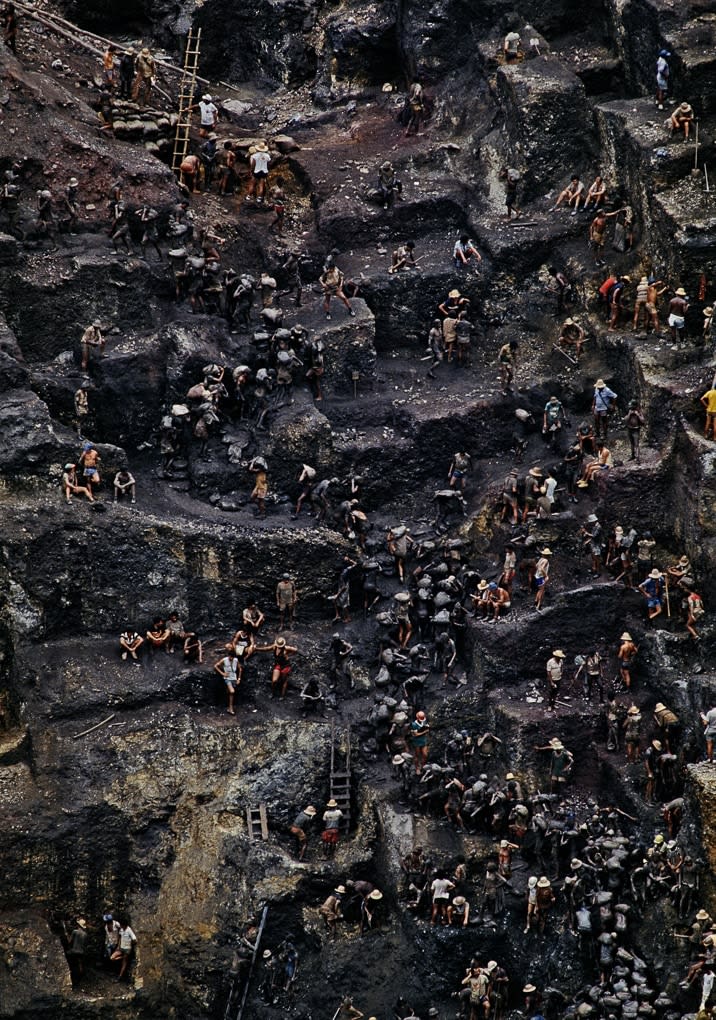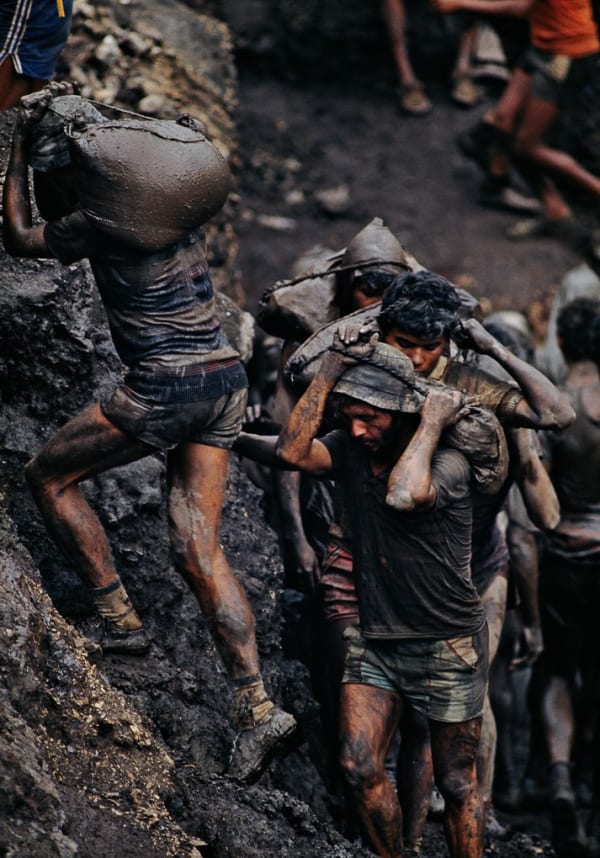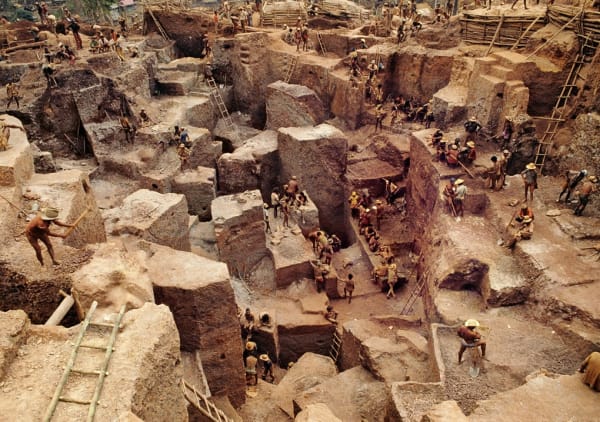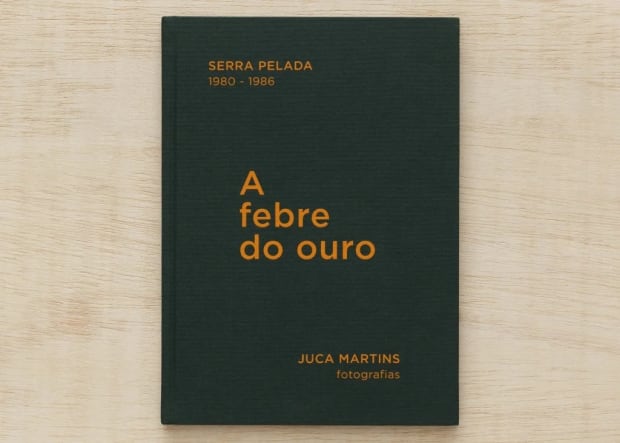-
Humankind X Nature: Juca Martins
"Serra Pelada" -
“DESPITE WE PROUDLY CLAIM TO DOMINATE NATURE,
WE ARE STILL ITS VICTIMS, AS WE HAVE NOT LEARNED
TO DOMINATE OURSELVES.
SLOWLY, BUT WHICH SEEMS FATAL TO US,
WE ATTRACT DISASTER.”
CARL JUNG
-

Serra Pelada: The gold fever
In the year 1980, while covering the story of the murder of a peasant leader in Pará, Juca heard about a gold mining that erupted in Serra Pelada, southwest of Belém. Juca Martins was the first photographer to document gold mining in Serra Pelada. At the time, 15,000 men were trying their luck in the middle of the Amazon rainforest. In 1981, one of the photographs in this report, a black and white picture, won the Nikon International Photojournalism Award.
In 1986, at the height of mining, when about 120,000 people migrated to the region, he returned to Serra Pelada. It was at the point the largest illegal mining in the country. Juca decided to record what he saw on color film. A little-known view of mining is revealed in the 17 photographs that Utopica presented for the first time in São Paulo, at the exhibition 'A Febre do Ouro/ The gold fever' in 2019.
-
More than actors in a collective drama orchestrated by the system. Or pieces of an inexorable game dictated only by political circumstances. In the images that Juca Martins made of Serra Pelada, people seem to tell us that they are there as individuals. With personal dramas, for dure, but also with a will of their own.
In the photographs of the largest open-air mining in the world, the human dimension persists. Even in the overwhelming images that show the immensity of a crater of more than 24 thousand square meters open in the middle of the forest.
Young people playing hand in hand on the dusty road. The prospectors who smile at Juca's camera as they sift through the wet earth. These are images that arrive without intermediation to those who see them. Putting human beings face to face.
Thousands of men, who go up and down the slopes carrying sacks of earth in which they hope to find their fortune. The earth, the water and their skin blend into a twilight tone. As in the painting of an artist dazzled by a scene that doesn't fit on his canvas.
-
Back to Serra Pelada
In addition to the precarious work situation and the thousands of deaths from accidents, Serra Pelada was marked by violence. At least 80 murders were recorded per month in the area and the military government attacked the miners frequently, in an attempt to return part of the region to the company Vale do Rio Doce.
The best known of these, the "Bridge Massacre", cornered and attacked more than 300 men who were at a manifestation for better working conditions. 70 bodies remain unaccounted for to this day, and it is estimated that over 42 tons of gold were mined in the 1980s.
As of the 1988 constitution, Brazil began to exercise a policy of environmental protection, demarcating and protecting indigenous lands, reducing mining, burning and deforestation. Gradually the country gained international respect for its environmental policy.
But everything has changed in the last decade. Remembering Serra Pelada becomes fundamental to look at what we are living now. "All the evolution we've had since the 88th constitution was thrown in the trash in 2016. In the last six years we have entered a destructive period worse than the one we faced in the dictatorship. And with this current government, what we see is a delay of 40 years", comments Juca Martins.
Today mining remains one of the major environmental and political issues in Brazil, which continues to be the country that kills the most activists. In recent years, with governments aligned to the extreme right legislating in favor of exploitation, illegal mining and the attack on the entire region has progressed in an increasingly worrying way. Currently, Serra Pelada continues to be the target of political and electoral speculation, along with gold miners cooperatives and the military.
-
-
Juca Martins
During the military dictatorship, Juca worked as a photo reporter for the main Brazilian newspapers and magazines. He was present at some of the most remarkable moments of the social movements, such as the strikes of the bankers and metallurgists of ABC, led by Luiz Inácio Lula da Silva. In 1976, he was art director of the newspaper Movimento, one of the most active in opposition to the dictatorship. Three years later, he founded the F4 Photojournalism Agency, alongside Nair Benedicto, Ricardo Malta and Delfim Martins. The agency was largely responsible for important achievements for Brazilian photographers, such as the right to the negative and the creation of a price list for the commercialization of photos, which gave the photographer the power to choose who would publish their images. After the dissolution of F4, in 1991 he founded Pulsar Imagens, with Laura Del Mar and Delfim Martins. Juca also collaborated with newspapers and magazines abroad, always with a concerned look, covering armed conflicts in Lebanon, El Salvador and Guatemala. He spent some time in Cuba and was the first to document the mining of Serra Pelada, Pará, in 1980, a series of photos that earned him the Nikon International Award in 1981.
He is the author of several books and one of the greatest exponents of political photography in Brazil. He was awarded the Esso Photography Award 1980 (for the images of the report ""Congonhas Rest Clinic"" by Cecilia Prada, who received the Esso Prize for Reportage); with the Nikon International Prize also in 1979 (strike of the bankers in São Paulo); and the 1982 Wladimir Herzog Human Rights Award (coverage of the war in El Salvador)."
-

HUMANKIND X NATURE:
Juca Martins: "Serra Pelada"
Current viewing_room








